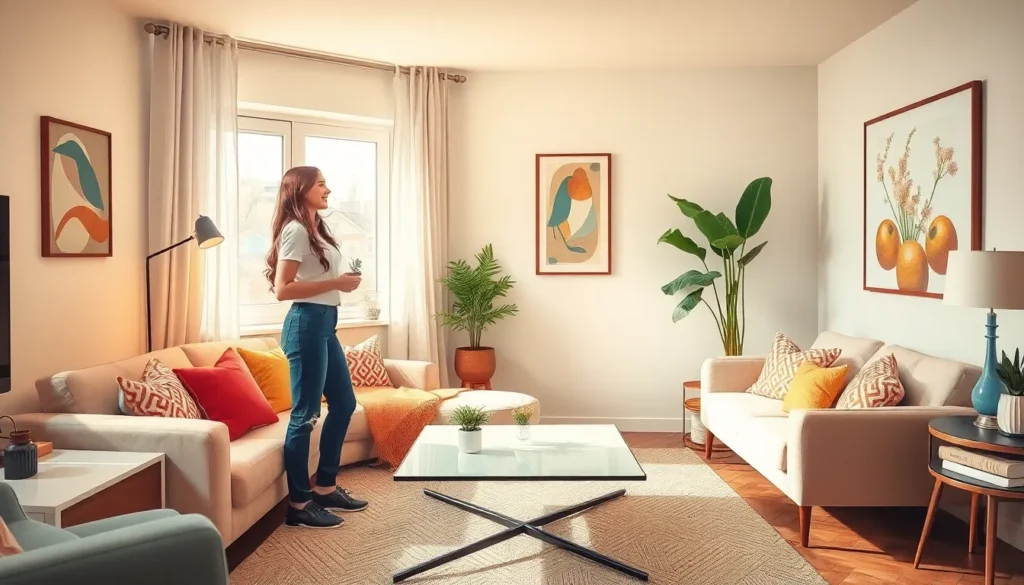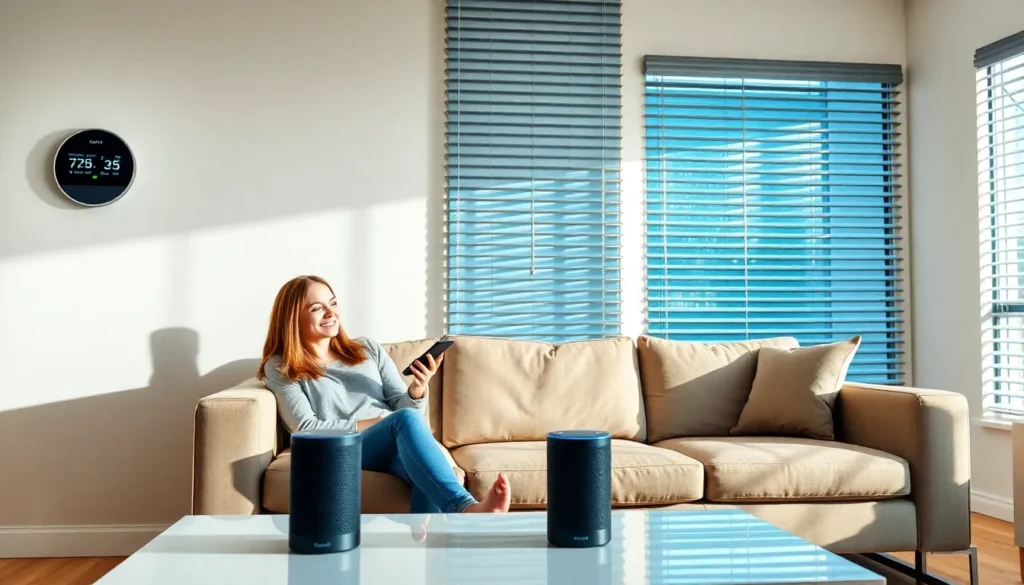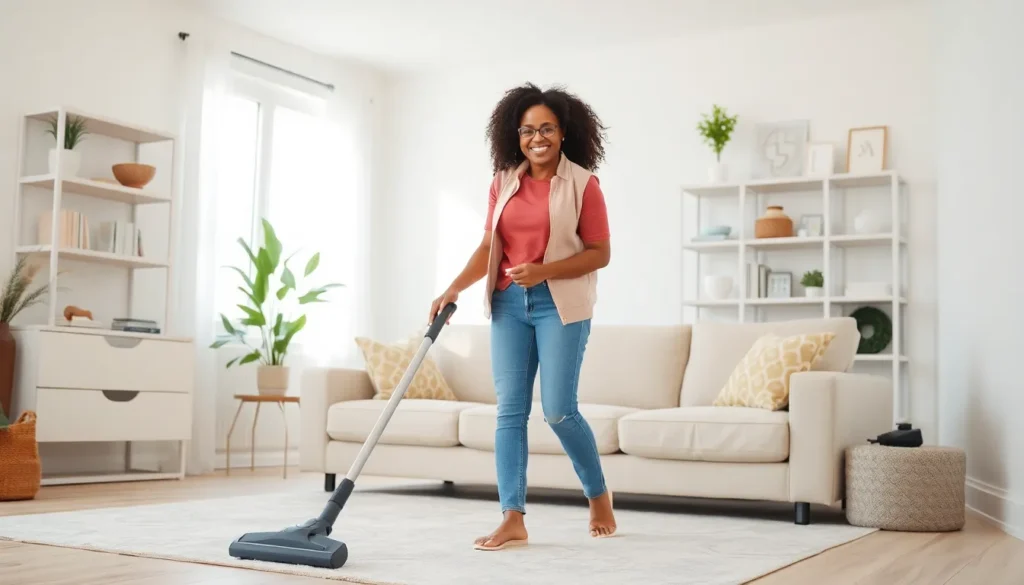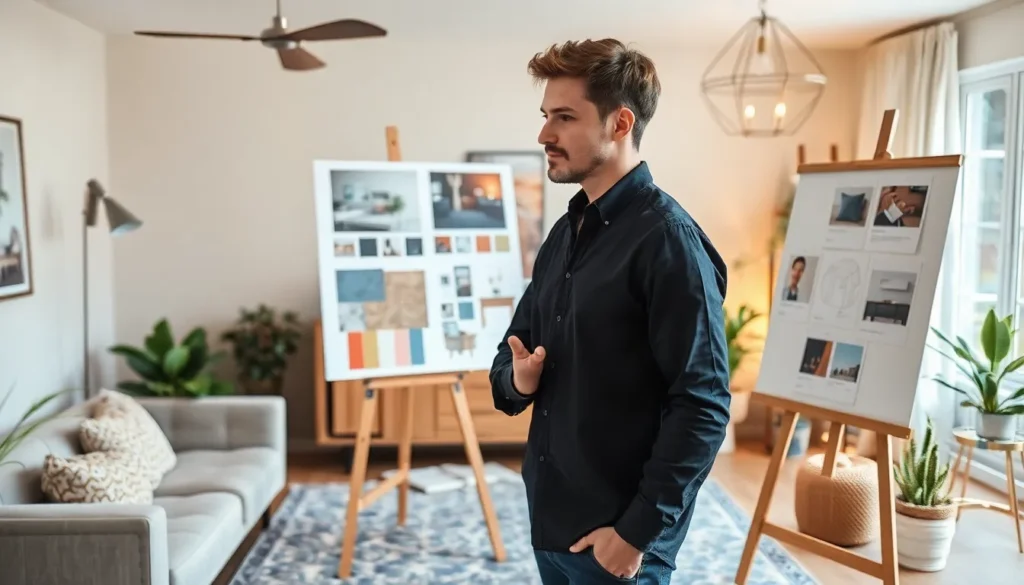Table of Contents
ToggleDesign decor isn’t just about slapping a coat of paint on the walls and calling it a day. It’s an art form that transforms spaces into reflections of personality and style. Imagine walking into a room that feels like a warm hug or a breath of fresh air—now that’s the magic of thoughtful design.
Whether you’re a minimalist who believes less is more or a maximalist who thinks more is definitely more, there’s a world of decor waiting to be explored. From quirky wall art to statement furniture pieces, the right design choices can elevate your space from drab to fab faster than you can say “throw pillow.” So grab your measuring tape and your wildest ideas, because it’s time to dive into the delightful realm of design decor that’ll make your home the envy of all your friends.
Understanding Design Decor
Design decor represents the thoughtful arrangement and selection of elements in a space. It influences how individuals experience and interact with their environments.
Definition of Design Decor
Design decor consists of aesthetic choices that enhance the functionality and beauty of a space. It includes items like color palettes, furniture styles, and decorative accessories. Key components encompass wall art, textiles, and lighting. Each selection contributes to the overall harmony and appeal of interiors. The arrangement of these elements reflects personal preferences and style orientations. Designers typically focus on creating a cohesive look that resonates with occupants.
Importance of Design Decor
Design decor significantly impacts the ambiance and usability of living spaces. It promotes comfort, making areas more inviting and practical. Thoughtful decor can alter perceptions of size and openness, enhancing spatial experiences. A well-designed environment fosters creativity and productivity. Conversely, cluttered or uninspired spaces can lead to stress. Investing in design decor not only elevates aesthetics but also promotes a sense of well-being. Individuals find purpose in expressing their identities through their decor choices.
Elements of Design Decor
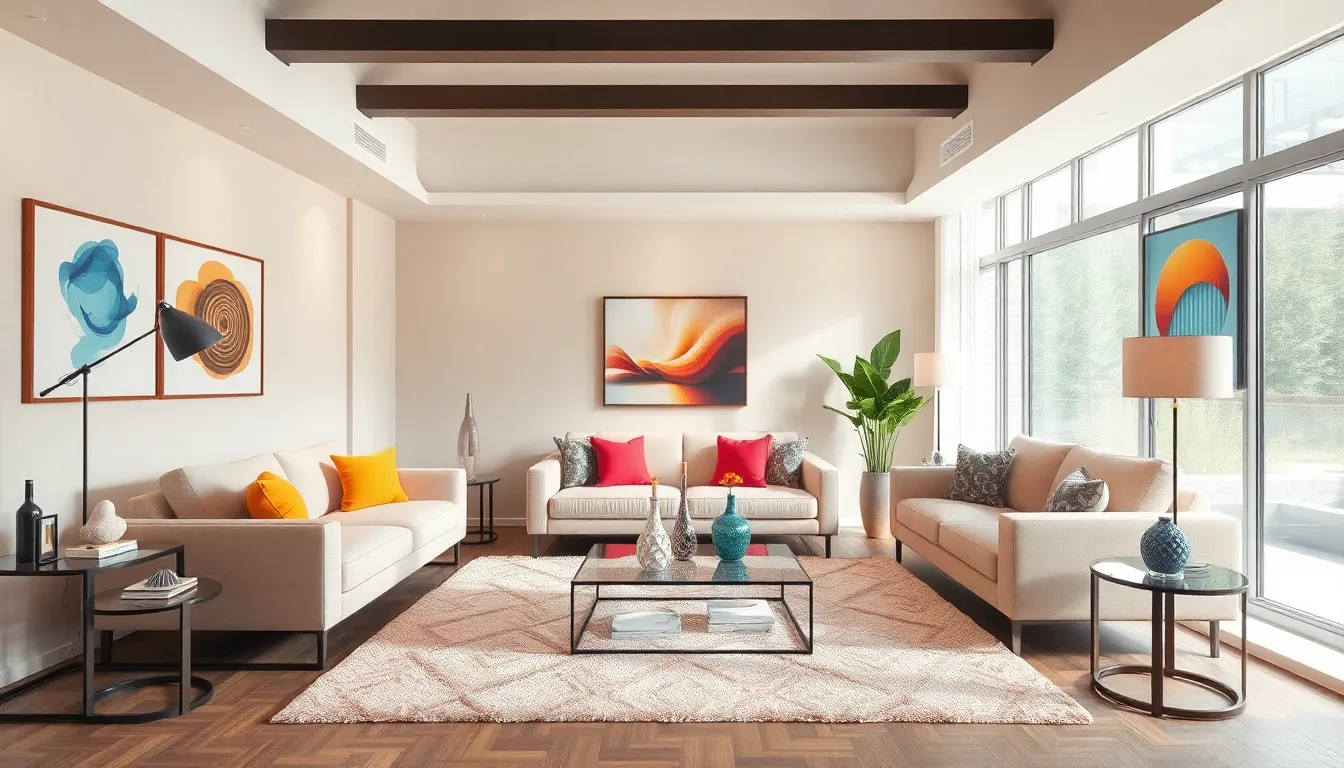
Design decor consists of several components that work together to create a cohesive and inviting environment. These elements include color schemes, furniture selection, and textures or materials, each playing a crucial role in shaping spaces.
Color Schemes
Color schemes establish the mood of a room and influence how individuals perceive its size and warmth. Neutral shades like beige and gray create calm atmospheres while vibrant colors like red or yellow add energy and excitement. Designers often recommend using a dominant hue complemented by two or three accent colors for balance. Additionally, understanding the psychological effects of colors can guide choices. For example, blue promotes tranquility, making it suitable for bedrooms. Selecting a cohesive color palette enhances harmony while reflecting personal style.
Furniture Selection
Furniture selection defines the practicality and comfort of a space. Choices vary from modern pieces with clean lines to vintage items that add character. Scaling furniture appropriately to room size ensures optimal flow and function. Multi-functional pieces work well in smaller areas, maximizing usability without sacrificing aesthetics. Prioritizing quality materials over quantity guarantees longevity and satisfaction. Arranging furniture to foster conversation and engagement further enhances the environment. Attention to detail matters; each piece contributes to the overall theme and functionality of the space.
Textures and Materials
Textures and materials introduce depth and interest to design decor. Incorporating diverse elements like wood, metal, glass, and fabrics creates a tactile experience. Soft textiles like velvet or cotton add warmth, while hard surfaces can provide contrast. Layering different textures enhances visual appeal, leading to more inviting spaces. For instance, combining smooth tables with plush rugs generates a balanced atmosphere. Choosing sustainable materials not only benefits the environment but also reflects mindfulness in design. Understanding the interplay of textures elevates decor, promoting both comfort and style.
Popular Design Decor Styles
Different design decor styles bring unique aesthetics and functionalities to living spaces. Exploring these styles helps individuals find the perfect match for their tastes and needs.
Modern Design Decor
Modern design decor features clean lines and minimalistic aesthetics. This style emphasizes neutral color palettes, open spaces, and simple forms. Furniture in modern decor often combines function with form, showcasing innovative materials like metal and glass. Art pieces serve as focal points, enhancing visual impact without overwhelming spaces. Light fixtures maintain sleek designs while providing maximum illumination, contributing to an overall airy feel. Such environments promote clarity and focus, aligning perfectly with contemporary lifestyles.
Vintage Design Decor
Vintage design decor captures charm and character from bygone eras. Warm color schemes, antique furniture, and retro accessories evoke nostalgia. Elements often include patterned wallpapers and ornate detailing that tell stories of the past. Collectible items enhance authenticity, creating a layered aesthetic that feels both lived-in and unique. Mixing and matching pieces from different eras adds personalization to spaces. This style cultivates an inviting atmosphere, transcending trends and uniting generations in harmony.
Bohemian Design Decor
Bohemian design decor celebrates creativity and eclecticism. Rich colors, varied textures, and global influences define this vibrant style. Furniture selection embraces comfort, incorporating floor cushions and layered rugs for relaxed gathering spaces. Artwork and textiles, often sourced from travels, infuse personality and warmth. Indoor plants seamlessly integrate nature, promoting tranquility and life within interiors. This unconventional approach encourages self-expression, making homes truly one-of-a-kind retreats.
Tips for Styling Your Space
Transforming a space involves clever design choices. Here are some tips to style effectively.
Creating a Focal Point
Establishing a focal point anchors a room, drawing the eye to a specific area. Artwork, statement furniture, or architectural features can serve this purpose. For example, a large painting above a sofa creates visual interest. Choosing a bold piece ensures it commands attention and sets the tone for the rest of the decor. Lighting also plays a critical role; pendant lights or unique fixtures enhance the focal area, adding dimension. Utilizing elements like texture and color around the focal point ties the room together, creating harmony.
Balancing Functionality and Aesthetics
Functionality and aesthetics must harmonize for a well-designed space. Each piece of furniture should serve a purpose while contributing to the overall look. Comfort and ease of movement are vital; oversized furniture may overwhelm a small area. Selecting multi-functional furniture items boosts practicality and maintains visual appeal. Incorporating storage solutions helps keep spaces organized and uncluttered, enhancing functionality. Harmonizing design choices—like using a consistent color palette—reinforces aesthetics, ensuring beauty without sacrificing usability.
Design decor is more than just aesthetics; it’s a means of self-expression and creativity. By thoughtfully selecting colors, furniture, and textures, individuals can craft spaces that resonate with their personalities and enhance their daily lives. Each design choice contributes to the atmosphere and functionality of a home, promoting comfort and inspiration.
Exploring various styles allows for a unique approach to personal spaces. Whether leaning towards modern minimalism or bohemian eclecticism, the possibilities are endless. Embracing these elements not only transforms environments but also fosters a sense of belonging and peace. With a little imagination and intention, anyone can elevate their home into a stylish retreat that reflects who they truly are.

